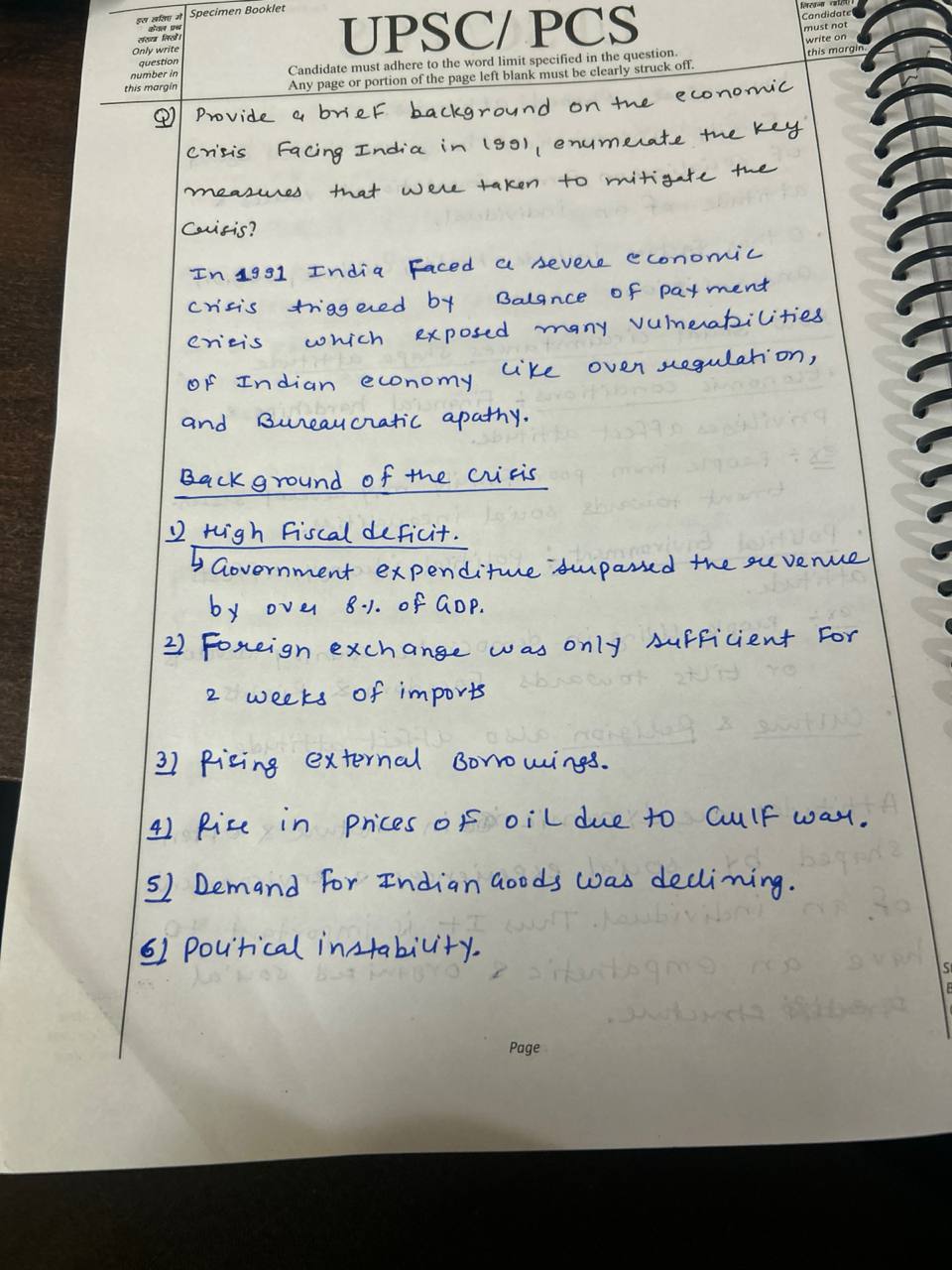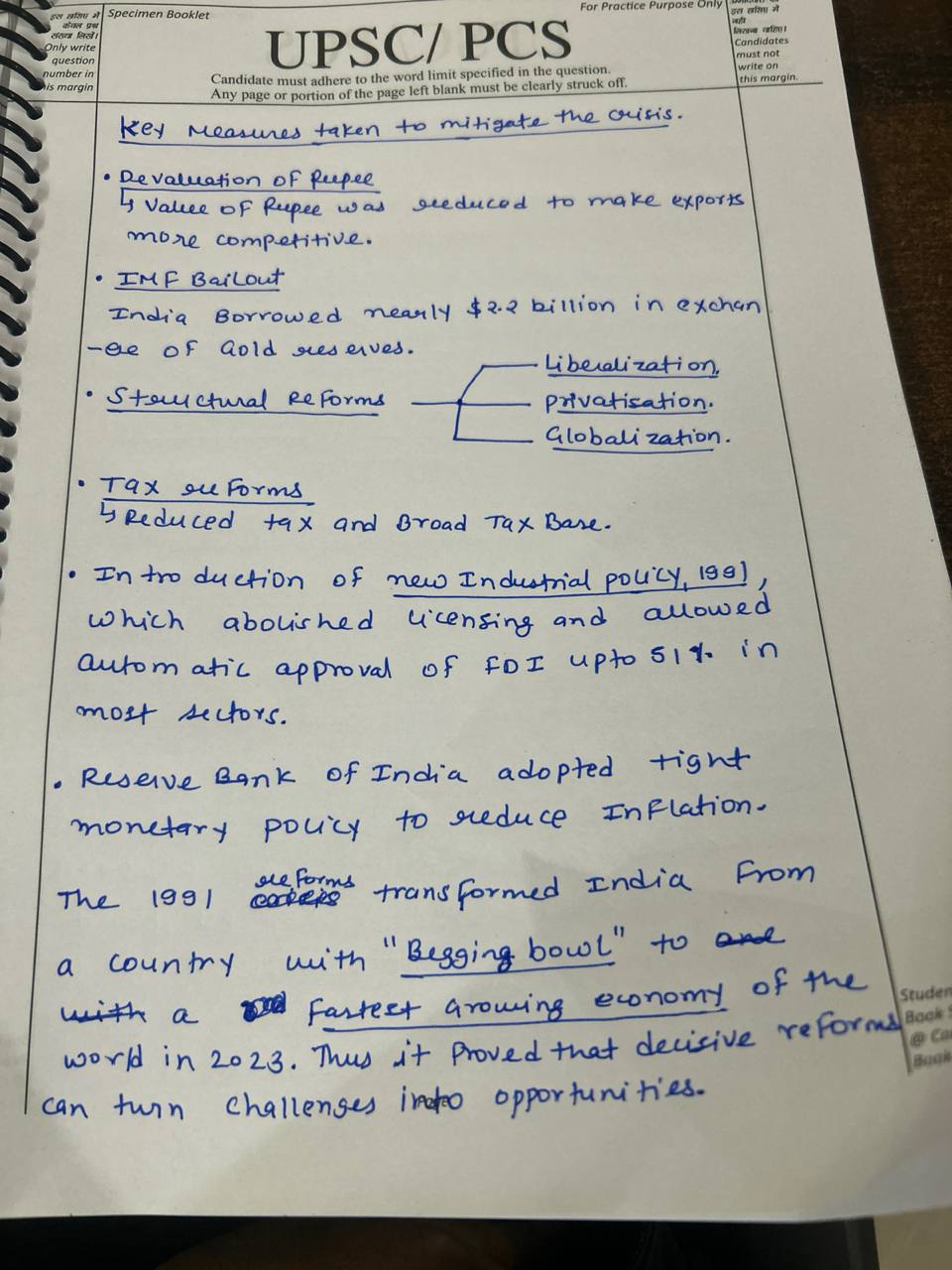Consider how well the government’s efforts to boost the manufacturing sector—such as the ‘Make in India’ program and the National Manufacturing Policy—address issues of low productivity, a lack of integration with global value chains, and job creation.
The Indian government has implemented several key policies and measures aimed at enhancing financial inclusion and access to credit, particularly for marginalized sections of the population. Let's evaluate some of these initiatives and their impact: 1. Jan Dhan Yojana: Objective: The Pradhan MantriRead more
The Indian government has implemented several key policies and measures aimed at enhancing financial inclusion and access to credit, particularly for marginalized sections of the population. Let’s evaluate some of these initiatives and their impact:
1. Jan Dhan Yojana:
Objective: The Pradhan Mantri Jan Dhan Yojana (PMJDY), launched in 2014, aimed to provide financial services such as savings accounts, remittances, credit, insurance, and pension to the unbanked population.
Impact:
Increased Financial Inclusion: By 2023, over 43 crore Jan Dhan accounts had been opened, significantly increasing the percentage of financially included households.
Direct Benefit Transfer (DBT): Enabled direct transfer of subsidies and benefits to beneficiaries, reducing leakages.
Access to Credit: Facilitated easier access to formal credit through overdraft facilities and micro-insurance.
2. Pradhan Mantri Mudra Yojana (PMMY):
Objective: Launched in 2015, PMMY aims to provide funding to micro and small enterprises by offering loans up to Rs. 10 lakh to non-corporate, non-farm small/micro enterprises.
Impact:
Enhanced Credit Access: PMMY has disbursed loans to millions of small entrepreneurs, promoting entrepreneurship and self-employment.
Job Creation: Supported the growth of small businesses, leading to employment generation, especially in rural and semi-urban areas.
Reduction in Informal Sector Borrowing: Reduced reliance on informal sources of credit which often charge exorbitant interest rates.
3. Expansion of Banking and Microfinance Networks:
Objective: The government has focused on expanding the reach of banking services and microfinance institutions (MFIs) to underserved areas.
Impact:
Increased Accessibility: Expansion of bank branches and BC (Business Correspondent) networks has brought banking services closer to rural and remote areas.
Microfinance Penetration: MFIs have played a crucial role in providing small loans and financial services to economically weaker sections, especially women and rural entrepreneurs.
Assessment of Impact on Financial Security and Entrepreneurship:
Financial Security: These initiatives have contributed significantly to enhancing financial security among marginalized populations by providing them with access to formal banking services, insurance, and pension schemes. This has reduced their vulnerability to economic shocks and enhanced their ability to save and invest.
Entrepreneurship: PMMY, in particular, has boosted entrepreneurship by providing timely and affordable credit to small businesses and startups. This has fostered a culture of entrepreneurship, especially in rural areas, leading to job creation and economic empowerment.
Challenges and Areas for Improvement:
Awareness and Education: Ensuring that beneficiaries understand the benefits and proper utilization of these services remains a challenge.
Sustainability: Continuous monitoring and support are essential to ensure the long-term sustainability of these initiatives and to prevent misuse or defaults.
Conclusion:
Overall, the government’s policies and measures such as Jan Dhan Yojana, PMMY, and the expansion of banking and microfinance networks have had a positive impact on improving financial security and fostering entrepreneurship among marginalized sections of the population in India. These initiatives have significantly contributed to inclusive economic growth and empowerment, although ongoing efforts are needed to address challenges and ensure sustainable outcomes.
See less


The Indian government's initiatives to promote the growth of the manufacturing sector, notably the 'Make in India' program and the National Manufacturing Policy were designed to tackle several challenges and boost the sector’s contribution to the economy. Here's an evaluation of their effectivenessRead more
The Indian government’s initiatives to promote the growth of the manufacturing sector, notably the ‘Make in India’ program and the National Manufacturing Policy were designed to tackle several challenges and boost the sector’s contribution to the economy. Here’s an evaluation of their effectiveness in addressing key issues such as low productivity, limited integration with global value chains, and job creation:
1. ‘Make in India’ Program
Objectives:
Increase Manufacturing Output: Enhance the sector’s contribution to GDP.
Boost Employment: Create job opportunities in manufacturing.
Enhance Global Competitiveness: Attract foreign investment and integrate with global value chains.
Effectiveness:
Productivity Improvement:
Progress: The ‘Make in India’ program has spurred several initiatives to improve productivity through reforms in labor laws and ease of doing business.
Challenges: Despite some improvements, the manufacturing sector still faces issues with productivity due to infrastructure constraints, skills mismatch, and regulatory hurdles.
Integration with Global Value Chains:
Progress: The initiative attracted foreign direct investment (FDI) and led to the establishment of manufacturing hubs in various sectors, including electronics and automotive.
Challenges: Integration with global value chains has been gradual. India still faces challenges related to logistics, regulatory bottlenecks, and quality standards that limit deeper integration.
Job Creation:
Progress: The program contributed to job creation, particularly in sectors such as electronics, textiles, and automotive.
Challenges: The creation of high-quality jobs has been uneven, with some sectors seeing more substantial employment growth than others. Skills mismatch remains a significant issue.
2. National Manufacturing Policy
Objectives:
Increase the Sector’s Contribution to GDP: Target a 25% share of GDP from manufacturing.
Promote Investment: Encourage both domestic and foreign investments.
Foster Innovation: Support research and development and technological advancement.
Effectiveness:
Productivity Improvement:
Progress: The policy aimed to address productivity issues by promoting technological upgradation and infrastructure development through schemes like the Modified Special Incentive Package Scheme (M-SIPS).
Challenges: While there have been improvements, many manufacturing units, especially small and medium enterprises (SMEs), continue to struggle with outdated technology and low productivity levels.
Integration with Global Value Chains:
Progress: The policy has encouraged partnerships and investments that help integrate Indian manufacturing with global supply chains. Initiatives like the development of industrial corridors (e.g., Delhi-Mumbai Industrial Corridor) support this integration.
Challenges: Despite these efforts, India still faces significant barriers, including infrastructure deficits, complex regulatory environments, and limited domestic technological capabilities.
Job Creation:
Progress: The policy has supported the creation of jobs through various schemes and incentives aimed at expanding industrial capacity and promoting new industries.
Challenges: The anticipated job growth has not always met expectations. The sector often faces a mismatch between the skills provided by educational institutions and those demanded by employers, affecting job quality and creation.
Overall Evaluation
Successes:
Both initiatives have contributed to increased investment in the manufacturing sector and some improvements in productivity and job creation.
The ‘Make in India’ program has successfully attracted significant foreign investment and enhanced India’s global manufacturing profile.
The National Manufacturing Policy has laid down a framework for growth and improvement, focusing on infrastructure and technological advancement.
Areas for Improvement:
Addressing productivity issues requires more robust support for technology adoption and skill development.
See lessGreater efforts are needed to overcome infrastructure and regulatory challenges to better integrate with global value chains.
Enhanced focus on skill development and vocational training is crucial to improving job quality and addressing the employment challenges in the manufacturing sector.
In summary, while the ‘Make in India’ program and the National Manufacturing Policy have had positive impacts, addressing the remaining challenges will require sustained and targeted efforts to fully realize their objectives and enhance the sector’s contribution to the economy.